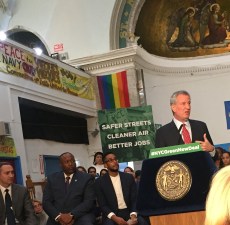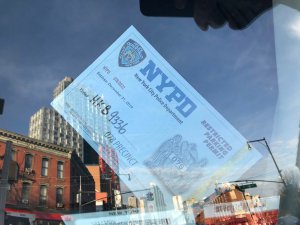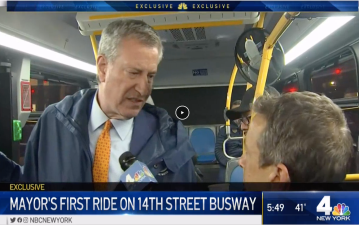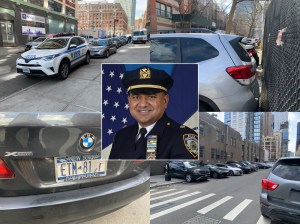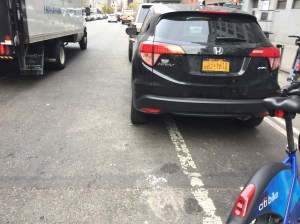Brooklyn Precinct, Where Drag-Racing Cop Worked, Has Many Reckless Drivers
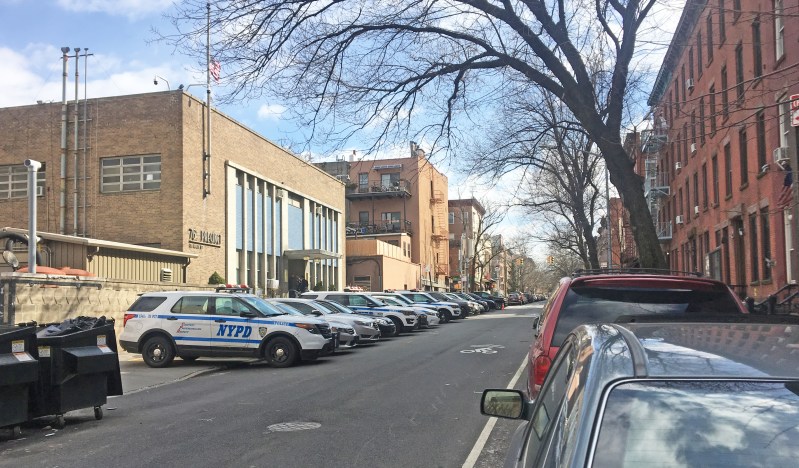
He’s not the only one.
Police Officer Garman Chen, who died in a fiery crash after apparently drag racing on the FDR Drive early Saturday, is certainly not the only cop at the 76th Precinct with a documented record of reckless driving.

On the first business day after Chen’s crash, Streetsblog visited the 76th Precinct stationhouse on Union Street and found that 60 percent of Chen’s co-workers have at least one serious moving violation on their private cars and 44 percent have multiple serious violations.
Those numbers are well above the already high police department averages of 58.4 percent with a moving violation and 37.8 percent with multiple moving violations.
The NYPD’s overall numbers are also much further above the rate at which members of the general public get moving violations — and more than twice the rate at which everyday New York drivers get multiple moving violations.
City Hall and the NYPD declined to comment or answer questions about how NYPD officers or employees are disciplined for bad driving.
The findings are the latest in our ongoing investigation into reckless driving by police and NYPD employees — and are particularly egregious given that cops and workers at the 76th Precinct are getting worse. When we last checked the plates on non-official vehicles at the 76th Precinct back in March, 58.8 percent had gotten a serious moving violation (1.2 percent fewer than Monday) and 29 percent (or 15 percent fewer than Monday) had gotten multiple moving violations.
In all cases, the numbers do not reflect police officers’ cars with defaced license plates, a scourge among law enforcement. At the 76th Precinct on Monday, five cars had their plates intentionally obscured or defaced, a possible effort to avoid getting automated tickets. Since our findings only reflect camera-issued tickets, there’s no way of knowing how many times an officer has been pulled over by a fellow cop, but then not issued a ticket because of professional courtesy.
According to a review of Chen’s driving record, the officer had 15 camera-issued speeding violations and seven red-light violations — nine of them this year alone. His record would have forced police to impound his vehicle — perhaps saving his life — if the City Council had passed the Reckless Driver Accountability Act, which calls for seizing vehicles that have five or more serious moving violations within any 12-month period. (The bill would not exempt cops, by the way.)
The worst drivers examined by Streetsblog at the 76th Precinct stationhouse on Monday do not have records as bad as Chen’s, but several s-cop-laws stood out:
- One driver had three red light tickets and two speeding tickets — all since April, 2017.
- One driver had two red light tickets and two speeding tickets — all since July.
- One driver had nine speeding tickets, and another had eight.
- One cop had six serious moving violations and two more had five.
- And one cop had 12 serious moving violations — enough to trigger the seizure if the bill was actually law. Here’s what that record looks like, courtesy of How’s My Driving:

On Sunday, Council Member Brad Lander reiterated that the Reckless Driver Accountability Act could provide safety without the need for the mayor to specifically discipline reckless officers. The bill is already backed by a large majority of Council members, but does not yet have mayoral support.
“So many lives are lost senselessly to reckless driving, the lives of pedestrians, cyclists, passengers, and drivers themselves,” Lander told Streetsblog on Sunday. “The Reckless Driver Accountability Act is designed to save some of them. We’ll never know whether Officer Chen’s life might have been saved, because we did not have it in place in time. Let’s not take any longer to lose more lives we might have saved.” In September, though, the mayor suggested that the bill was not an “urgent” priority.
It is unclear why the NYPD appears to be so unresponsive to the street safety issue right in their midsts. After a wave of police suicides earlier this year, Commissioner O’Neill personally spoke about needing to take action to break the stigma that prevents many cops from seeking mental health services. And the city eventually offered free therapy for officers.
But no such effort has been made to improve officers’ physical safety when they are behind the wheel.
Ironically, the Streetsblog investigation began in March after de Blasio announced at a press conference that he intended to build more parking for police officers to facilitate car commuting by the 51 percent of cops who live in the suburbs and the many officers who live in the city but drive to work (even though all cops get free MetroCards).
“We will purchase parking lots, we will lease parking lots, parking garages — whatever it takes … so that our firefighters, our police officers, our EMTs actually have a place that they know they can park,” the mayor said. “Many officers feel they have no choice [but to drive to work].”
Perhaps, but they do have a choice to drive safely.
We will update this story if we hear back from City Hall or the NYPD.
